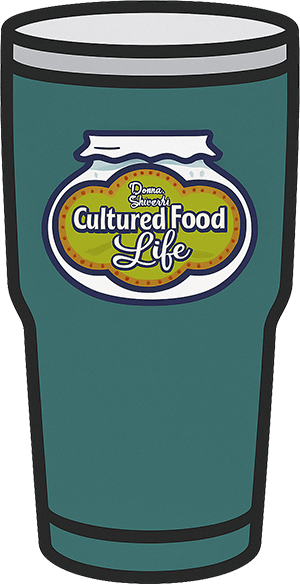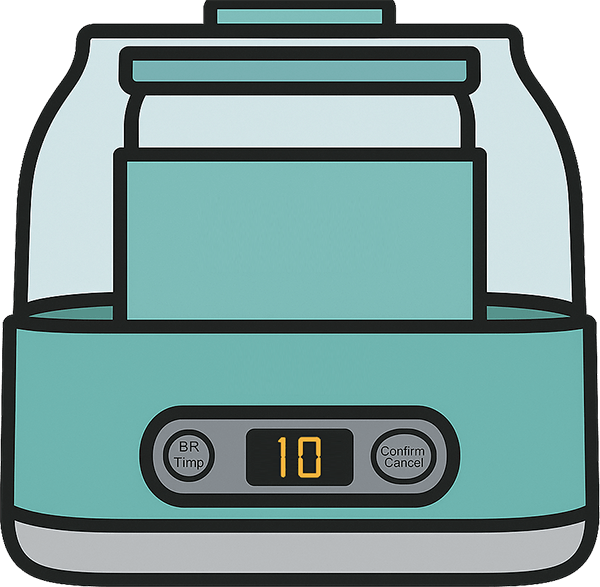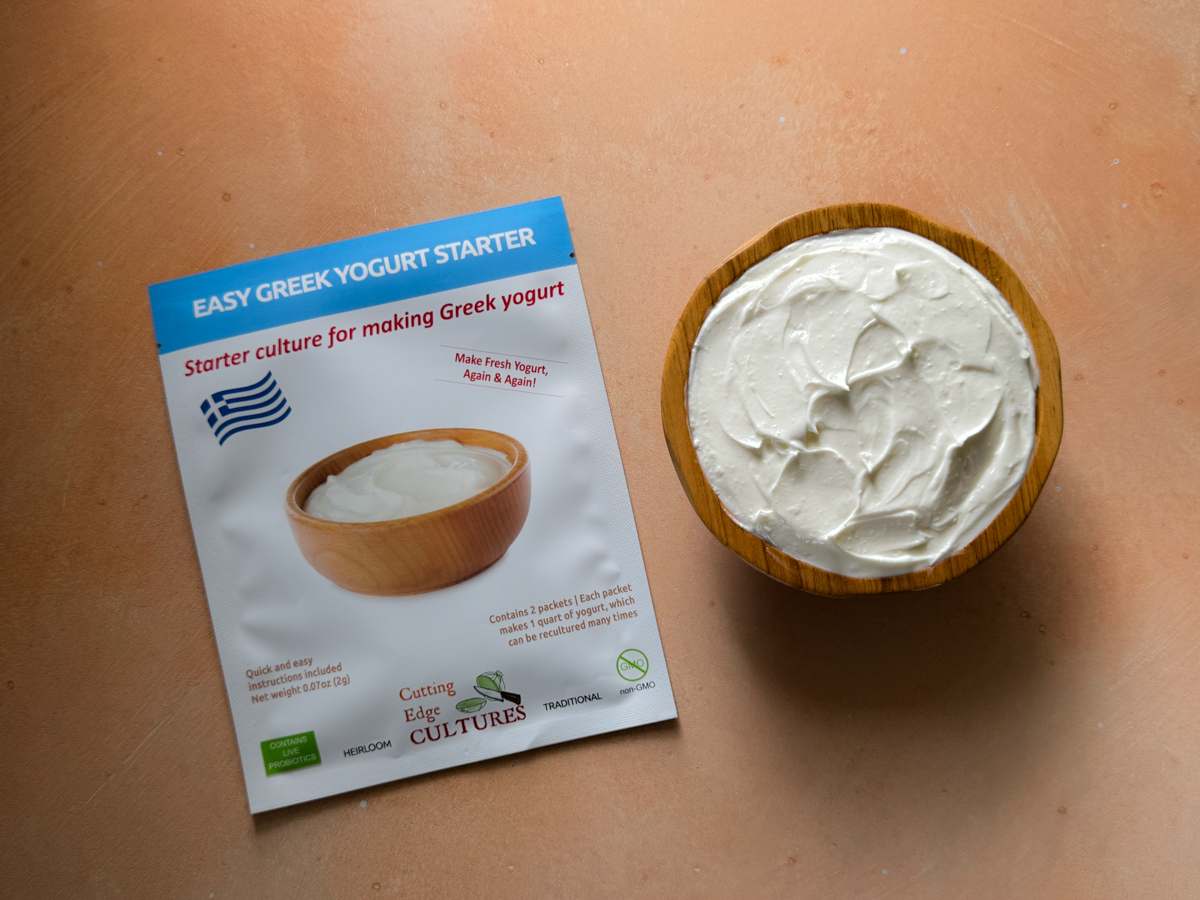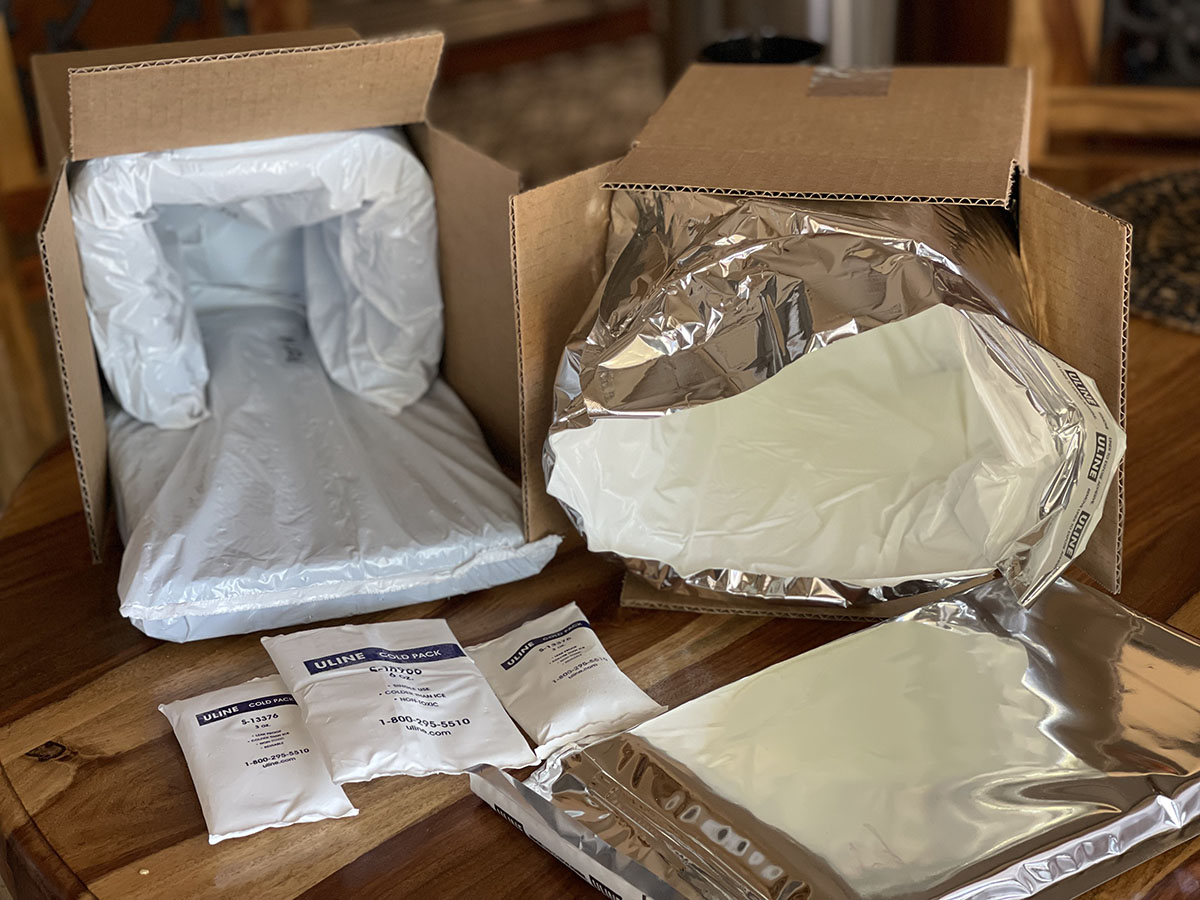Easy Greek Yogurt Starter
Introduction
 The Amazing Health Benefits of Greek Yogurt 💚
The Amazing Health Benefits of Greek Yogurt 💚
Greek yogurt is a great cultured food and one I use often in recipes —it’s creamy, tangy, and packed with so much goodness for your body! Because it’s strained to remove much of the whey, it becomes thick and rich in protein, which is fantastic for helping you feel full and satisfied.
One of the best things about Greek yogurt is that it’s loaded with probiotics—those live, beneficial bacteria that help balance your gut microbiome. A healthy gut means better digestion, stronger immunity, and even better mood and mental clarity. 🌿✨
Greek yogurt is also an excellent source of calcium and other minerals that support strong bones, plus it’s lower in sugar than many other yogurts because of the straining process. The high protein content helps stabilize blood sugar levels, making it a smart choice if you're watching your carbs or trying to maintain steady energy throughout the day.
And don’t forget—when you make your own at home, you’re getting even more probiotic power because it’s fresh, alive, and not sitting on a store shelf losing strength. That’s why I always say: making your own cultured foods is one of the best gifts you can give your body.
High-Protein Yogurt & Your GLP-1: A Natural Support 💚
One of the beautiful things about high-protein yogurts—like Greek yogurt, Skyr, and strained kefir—is how they naturally work with your body to help you feel satisfied and balanced. You may have heard a lot about GLP-1, a hormone your body produces that plays a key role in regulating blood sugar and controlling appetite.
Here’s where it gets exciting:
Eating protein-rich foods like thick yogurt can actually stimulate the release of GLP-1. This helps:
-
🥣 Keep You Full Longer – GLP-1 signals fullness to your brain, which can help with appetite control and reduce overeating.
-
🩸 Balance Blood Sugar – It helps slow down how quickly your stomach empties, which leads to steadier blood sugar levels after meals.
-
💪 Support Weight & Metabolism Goals – Combining high-protein foods with your meals can naturally assist your body’s metabolism in a balanced, gentle way.
What I love most is that cultured, high-protein yogurt offers so much more than just protein—it’s alive with probiotics, calcium, and nutrients that work in harmony with your body. And when you make it at home, you know every spoonful is fresh, potent, and nourishing.
Strains in Greek Yogurt
Purchase
United States:
If you live in the USA, you can order directly from my store. I keep these cultures refrigerated to ensure that they stay alive & fresh while they are waiting for you to adopt them.
Purchase from my store Get the support you need!
Refrigeration is always recommended! These cultures will last 24 months in the fridge, even longer in the freezer, but only about two weeks at room temperature.
Instructions
Easy Greek Yogurt 🍶✨
Watch The Video
Equipment
- 1 Insulated Mug
(30 ounces). Must be good quality stainless steel. You can also use a Yogurt Maker, Sous Vide, or similar device. - Kefirko Yogurt and Cheese Strainer or cheese cloth, or ultra-fine mesh strainer (optional)
Ingredients
- 1 quart Milk - ultra-pasteurized dairy cow milk (skim, 2%, or whole)
- 1 sachet Easy Greek Yogurt Starter - or ¼ cup of Easy Greek Yogurt (from previous batch)
Every ingredient with a link was selected by me to make it easier for you. I may receive a small affiliate commission if you buy something through my links. Thank you! ❤️
Instructions
 Greek Yogurt in a Stainless Steel Mug
Greek Yogurt in a Stainless Steel Mug
- WARM: If using ultra-pasteurized milk, gently heat milk to 110°F — boiling is not necessary. If using milk that has not been ultra pasteurized, slowly heat the milk to 212°F (100°C), stirring frequently to prevent scorching. Once heated, remove from heat and allow it to cool to 110°F (43°C) before proceeding.
- MIX: Pour into the insulated mug and gently stir in 1 sachet Easy Greek Yogurt Starter until dissolved.
- INCUBATE: Close the lid, wrap with a towel or blanket or similar insulation on all sides, including top and bottom. Place in an insulated cooler. If temperatures are 75°F or above, it is usually fine without the cooler. Incubate for 8-10 hours or up to 24 hours if the texture hasn't thickened.
- STORE: When the yogurt has thickend and has a pleasant tangy flavor, your yogurt is ready. Secure the lid and refrigerate for at least 6 hours to set. The yogurt will continue to firm up as it chills. Keep the finished yogurt in the fridge
- OPTIONAL: After refrigeration, strain the yogurt using a yogurt strainer or a cheesecloth, or ultra-fine mesh strainer.
 Greek Yogurt in a Yogurt Maker
Greek Yogurt in a Yogurt Maker
- WARM: If using ultra-pasteurized milk, gently heat milk to 110°F — boiling is not necessary. If using milk that has not been ultra pasteurized, slowly heat the milk to 212°F (100°C), stirring frequently to prevent scorching. Once heated, remove from heat and allow it to cool to 110°F (43°C) before proceeding.
- MIX: Pour into the yogurt maker and gently stir in 1 sachet of Easy Greek Yogurt Starter (or 1/4 cup of yogurt made with Easy Greek Starter) until dissolved.
- INCUBATE: Place the container in the yogurt maker, cover, and follow the appliance's instructions. Incubate for 8-10 hours. If the yogurt hasn't thickened, extend the incubation for 2-4 more hours, checking every 2 hours.
- STORE: When the yogurt has thickened and has a pleasant tangy flavor, the yogurt is ready. Secure the lid and refrigerate for at least 6 hours to set. The yogurt will continue to firm up as it chills. Keep the finished yogurt in the fridge
- OPTIONAL: For a thicker yogurt, after refrigeration, strain the yogurt using a yogurt strainer, cheese cloth, or ultra-fine mesh strainer.
Reculturing
- To make a new batch, repeat these instructions except use ¼ cup of Greek yogurt from your previous batch as your starter culture (instead of a new sachet).

Frequently Asked Questions
- What kind of milk can I use to make yogurt at home? Any ultra-pasteurized dairy milk can be used with this starter culture, including skim, 1%, 2%, whole milk, or half-and-half.
- How can I make my yogurt thicker? There are several ways to improve the thickness of the yogurt. Straining the yogurt with a cheese or yogurt strainer is the recommended method. See below for more options. Adding whole milk or a little cream can make your yogurt thicker. However, don’t use all cream, as it doesn’t contain enough lactose for the bacteria to form yogurt. Heating the milk to high temperatures of 195°F and holding it there for 20 minutes denatures the proteins, allowing them to form a firmer curd. A higher temperature, held for a longer period, will result in a firmer yogurt.
- How To Make High-Protein Yogurt:
- Make Your Yogurt:
- Get Your Strainer Ready: Use a yogurt or cheese strainer or a fine-mesh strainer lined with cheesecloth. Place it over a bowl to catch the whey.
- Strain the Yogurt: Pour your finished yogurt into the strainer. Let it sit in the fridge for a few hours (or overnight) to drain out the liquid whey.
- Check the Texture: The longer you strain, the thicker your yogurt will get! Stop when you reach your desired thickness—anything from Greek-style to thick cream cheese texture.
Pro Tip: Don’t throw out the whey! It’s full of nutrients and probiotics. You can use it in smoothies, soups, baking, or check out my 9 Ways to Use Extra Kefir Whey for ideas. 💚
- How long will finished yogurt last in my refrigerator? In the refrigerator, it should last 2-3 weeks, allowing you to reculture another batch. It should stay edible for 2-3 weeks.
- Can I use more than one sachet of starter culture to make yogurt? Do not use more starter than recommended. When you use too much starter, it can crowd the bacteria. The result is often a thinner, sometimes bitter, yogurt.
- Can I use my yogurt to revive another culture (such as milk kefir)? No, combining different cultures leads to competition among bacteria. Different bacteria will compete to dominate and can kill each other.
- Is the temperature important when culturing yogurt? It's important to stay within the recommended range of 110°F when culturing yogurt. Too warm and the bacteria will die. Too cool and the culturing will halt, and will likely not start again, and your yogurt will be thin and not form a curd.
- Why do I have to heat pasteurized milk when using the culture? Heating the milk to 195 to 212°F will kill any bacteria present in the milk that might compete with the bacteria in the culture. It will also help denature the protein to form a thicker curd. The goal is to eliminate unwanted bacteria that could prevent the yogurt from setting or that could grow alongside the beneficial bacteria contained in the starter.
- Can I make yogurt without a starter culture? No, either a yogurt starter culture or previously made live yogurt is required to make yogurt.
- What is a starter culture? A starter culture is a blend of bacteria that initiates the culturing process, lowers the pH of the milk, and contributes to the tangy taste and firmer texture of the resulting yogurt.
- How long does an unopened sachet of starter culture keep in the refrigerator? The "Best By" date is printed on each pouch and sachet. Please keep the starter culture refrigerated for optimal shelf life.
- What should I do if the yogurt slightly curdles or if the whey separates from the curds? No problem! The yogurt is still good; stir it to achieve a more even consistency or strain out the whey using a cheese strainer or cheesecloth.
- Should I add flavorings, such as fruit or sweeteners, during or after fermentation? Add these after the yogurt is fermented.
- Can Greek Yogurt be made with Non-dairy milk? So far, our numerous attempts to create a nondairy Greek yogurt have been unsuccessful, but we will continue trying and update you if we find one that works.


